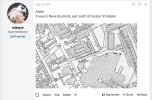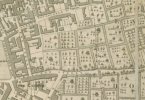-
Welcome to this forum . We are a worldwide group with a common interest in Birmingham and its history. While here, please follow a few simple rules. We ask that you respect other members, thank those who have helped you and please keep your contributions on-topic with the thread.
We do hope you enjoy your visit. BHF Admin Team
You are using an out of date browser. It may not display this or other websites correctly.
You should upgrade or use an alternative browser.
You should upgrade or use an alternative browser.
Nova Scotia Gardens Nova Scotia Street
- Thread starter mikejee
- Start date
Lady Penelope
master brummie
Were they Guinea Gardens? There seemed to be a lot of them in Birmingham but they gradually disappeared as the town spread.
I think those must have been the Edgbaston Guinea Gardens, Pedro. Basically, allotments would be their later equivalents. Found this description of the early guinea gardens:
The rent of 1 guinea meant they came to be called ‘Guinea Gardens.’ A guinea represented at the time a considerable proportion of a man’s wages.
James Drake writing in 1825 claimed these small gardens promoted ‘healthful exercise and rational enjoyment among families of the artisans; and, with good management, produce an ample supply of those wholesome vegetables stores, which are comparatively seldom tasted by the middling classes when they have to be purchased.’
J.A. Langford writing of the period 1810-1820 said that‘the Guinea Gardens were in very large numbers'. It was a ‘hobby’ with the Birmingham working man and the cultivation of flowers was carried to ‘great perfection by him.’ These gardens then flourished, were enjoyed by middle-class families and were regarded generally as highly desirable. The peak of this provision was between 1820 and 1830 after which the sale of much private land for industrial, residential, road or railway projects associated with the now accelerating urban expansion caused the decline of the system. By 1886 only 3 such sites remained and only one continues as allotments today
From what I can make out from adverts in the late 1700s into the early 1800s, the Nova Scotia Gardens were divided into single plots separated by "walks" and being used to grow a range of fruit, vegetables and flowers. Occasionally, there is a double plot for sale.
I can't say for certain, Pen, but it looks like NS Gardens most probably were originally 'guinea plots' or organised on a similar arrangement, and only available to those who could afford them.
The rent of 1 guinea meant they came to be called ‘Guinea Gardens.’ A guinea represented at the time a considerable proportion of a man’s wages.
James Drake writing in 1825 claimed these small gardens promoted ‘healthful exercise and rational enjoyment among families of the artisans; and, with good management, produce an ample supply of those wholesome vegetables stores, which are comparatively seldom tasted by the middling classes when they have to be purchased.’
J.A. Langford writing of the period 1810-1820 said that‘the Guinea Gardens were in very large numbers'. It was a ‘hobby’ with the Birmingham working man and the cultivation of flowers was carried to ‘great perfection by him.’ These gardens then flourished, were enjoyed by middle-class families and were regarded generally as highly desirable. The peak of this provision was between 1820 and 1830 after which the sale of much private land for industrial, residential, road or railway projects associated with the now accelerating urban expansion caused the decline of the system. By 1886 only 3 such sites remained and only one continues as allotments today
From what I can make out from adverts in the late 1700s into the early 1800s, the Nova Scotia Gardens were divided into single plots separated by "walks" and being used to grow a range of fruit, vegetables and flowers. Occasionally, there is a double plot for sale.
I can't say for certain, Pen, but it looks like NS Gardens most probably were originally 'guinea plots' or organised on a similar arrangement, and only available to those who could afford them.
Last edited:
So, what happened to what must have been this lovely part of Birmingham ?
It was developed in the late 18th century as part of a new area north of Duddeston Row (including Newmarket, Doe and Grosvenor Streets and Hicks Square). The land was previously owned by the Jennens family.
Brass founders and coffin furniture makers (eg Newman Bros) were located here in the late 1800s.
Below: Nova Scotia Street and Princes Street from north-east of Doe Street.

The post below by mikejee on the Holders Brewery thread shows The (Holders) Midland Brewery having been built over some of the Gardens area.

Nova Scotia Street would have been where the Eastside area is today, yet again an area of considerable redevelopment in modern times.
It was developed in the late 18th century as part of a new area north of Duddeston Row (including Newmarket, Doe and Grosvenor Streets and Hicks Square). The land was previously owned by the Jennens family.
Brass founders and coffin furniture makers (eg Newman Bros) were located here in the late 1800s.
Below: Nova Scotia Street and Princes Street from north-east of Doe Street.

The post below by mikejee on the Holders Brewery thread shows The (Holders) Midland Brewery having been built over some of the Gardens area.

Nova Scotia Street would have been where the Eastside area is today, yet again an area of considerable redevelopment in modern times.
Last edited:



